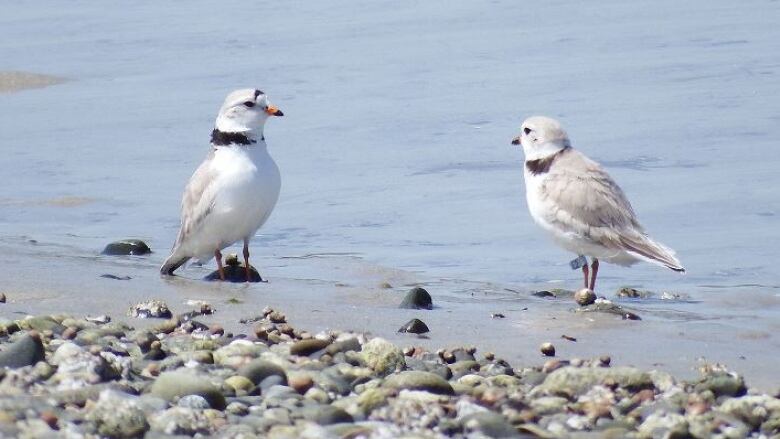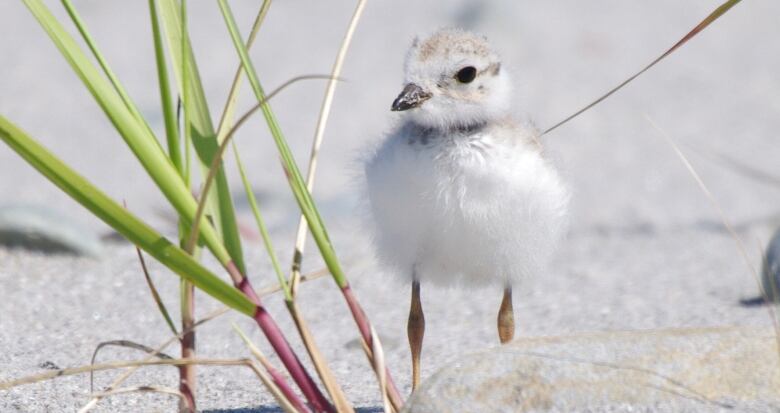Nova Scotia's piping plovers still plagued by off-leash dogs, group says
'There's the threat of off-leash dogs crushing eggs, of chasing off the birds,' biologist says

Off-leash dogs are threatening an alreadyendangered species of shore bird in Nova Scotia.
There are less than 50 pairs ofpiping ploversleftin Nova Scotia, down from 60 in 1991.
The sparrow-sized bird arrives each spring in the region to nest and raise its young at two dozen beaches in the province, mostly in the southwestern area, but also along the Eastern Shore to Cape Breton.
"Dogs offleash are a well-known threat to shore birds, not just plovers," says Sue Abbott, a biologist with Bird Studies Canada and theco-ordinatorofNova Scotia'sPiping Plover Conservation program.
A survey, that began in 2012,monitors the rate at which owners leash their dogs at provincial beaches. It shows too many canines still run free and threatenplover habitat.
Stay on wet sand in plover habitats
Ploversnest on open beach sand, Abbott said, which makes them and particularly their eggs and young vulnerable.
Anadult bird has to sit on its eggs in the open sand for 28 days before they hatch, and once the eggs hatch, it takes four weeks for the chicks to fly. In the meantime, "they need to come down to wet sand to feed," she said.

The piping plover population made some gains, about 15 per cent, between2006 and 2014, when the conservation program began. The target is to bring numbers back up to 60 pairs, Abbott said.
That means keeping dogs on leash and walking close to the shore in sensitive zones, where there are signs.
"There's the threat of off-leash dogs crushing eggs, of chasing off the birds so they can't settle on a beach," Abbott said.
Starting in 2012, Bird Studies Canada staff and volunteers have been surveying dog leash rates at about 30 beaches across the province.
Worst offenders on Eastern Shore
The survey results show anoverwhelming majority of dogs observed on the Eastern Shore between 2012 and 2015 were offleash. On average, only about fiveper cent of dogs surveyed were onleash.
The rate of on-leash dogs at Shelburne and Lunenburg county beaches sits at around 60 per cent from 2012 to 2015, while the average rate along the Northumberland Straight and Cape Breton is about 43 per cent.
"We've seen the highest levels of dogs being offleash at Conrad's Beach in Halifax and Martinique, as well as Glace Bay beach," Abbott says.
The number of dogs offleash at Conrad's beachhas actually gotten worse since the surveys began in 2012, she says.
"And dogowners are not allowed to do that those signs are well-placed, saying dogs must be onleash."
Abbott saysshe sympathizes with dog owners, especially in the Halifaxregion where it can be harder to find wide, open spaces and easily accessible recreation areas where dogs are allowed to run free.
"Maybe these numbers are a sign that we need more of a community conversation around getting more off-leash dog areas in HRM," Abbott says.












_(720p).jpg)


 OFFICIAL HD MUSIC VIDEO.jpg)
.jpg)



























































































